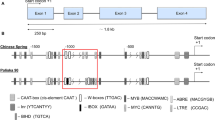Abstract
Abiotic stresses are the primary cause of crop loss worldwide. They result in average yield losses of more than 50% in major crops. The negative effects of abiotic stresses are thought to be increasing due to global climate change and the resulting erratic weather patterns. Improving crops’ ability to tolerate abiotic stresses through conventional breeding has been successful, especially in the case of wheat, as new cultivars better adapting to increasingly difficult growing conditions are being released regularly. However, as many stress-inducible genes have been identified, sequenced, characterized and insights into their functional roles in stress tolerance are being obtained, breeding programs have much to gain by exploring ways to target those stress-related genes that may be useful in their selection. If, or when, the relationship between different alleles or expression patterns of some stress-related genes is demonstrated, perfect markers for assisting breeder in selection for stress-tolerant lines can be readily obtained. Previously, we isolated and characterized the gene designated as TdDRF1 encoding for a dehydration responsive factor in durum wheat. Results obtained using plant samples of different cultivars in time-course experiments conducted in the greenhouse suggested that the expression profile of TdDRF1 upon water stress was genotype dependent. In the present paper we report results from field experiments carried at CIMMYT’s experimental fields near Obregon in Mexico, in which quantitative RT-PCR was used to monitor the expression profile of the three transcripts produced by the TdDRF1 gene under stressed (minimally irrigated) and non-stressed (fully irrigated) conditions. Tolerant and susceptible cultivars were analyzed and the results from these field experiments are compared with those from greenhouse testing.
Access this chapter
Tax calculation will be finalised at checkout
Purchases are for personal use only
Preview
Unable to display preview. Download preview PDF.
Similar content being viewed by others
References
Ingram J, Bartels D (1996) The molecular basis of dehydration tolerance in plants.Ann Rev Plant Physiol Plant Mol Biol 47: 377–403
Thomashow MF (1999) Plant cold acclimation: Freezing tolerance genes and regulatory mechanism.Annu Rev Plant Physiol Plant Mol Biol 50: 571–599
Shinozaki K, Yamaguchi-Shinozaki K (2000) Molecular responses to dehydration and low temperature: Differences and cross-talk between two stress signalling pathways. Curr Opin Plant Biol 3: 217–223
Bray EA (2004) Genes commonly regulated by water-deficit stress in Arabidopsis thaliana. J Exp Bot 55: 2331–2341
Seki M, Narusaka M, Ishida J, Nanjo T, Fujita M, Oono Y, Kamiya A, Nakajima M, Enju A, Sakurai T et al (2002) Monitoring the expression profiles of 7000 Arabidopsis genes under drought, cold and high salinity stresses using a full-length cDNA microarray. Plant J 31: 279–292
Yamaguchi-Shinozaki K, Shinozaki K (1994) A novel cis-acting element in an Arabidopsis gene is involved in responsiveness to drought, low-temperature, or high salt stress. Plant Cell 6: 251–264
Liu Q, Kasuga M, Sakuma Y, Abe H, Miura S, Yamaguchi-Shinozaki K, Shinozaki K (1998) Two transcription factors, DREB1 and DREB2, with an EREBP/AP2 DNA binding domain, separate two cellular signal transduction pathways in drought-and low temperature-responsive gene expression, respectively, inArabidopsis. Plant Cell 10:1391–1406
Kasuga M, Miura S, Shinozaki K, Yamaguchi-Shinozaki K (2004) A combination of theAra-bidopsis DREB1A gene and stress-inducible rd29A promoter improved drought-and low-temperature stress tolerance in tobacco by gene transfer. Plant Cell Physiol 45: 346–350
Shen YG, Zhang WK, He SJ, Zhang JS, Liu Q, Chen SY (2003) An EREBP/AP2-type protein in riticum aestivum was a DRE-binding transcription factor induced by cold, dehydration and ABA stress. TheorAppl Genet 106: 923–930
Dubouzet J, Sakuma Y, Kasuga M, Dubouzet E, Miura S, Seki M, Shinozaki K, Yamaguchi-Shinozaki K (2003) OsDREB genes in rice, Oryza sativa L., encode transcription factors that function in drought-, high salt-and cold-responsive gene expression. Plant J 33: 751–763
Jiang Y, Qin F, Li Y, Fang X, Bai C (2004) Measuring specific interaction of transcription factor ZmDREB1 A with its DNA responsive element at the molecular level. Nucleic Acid Res 32: e101
Xue GP, Loveridge CW (2004) HvDRF1 is involved in abscisic acid-mediated gene regulation in barley and produces two forms of AP2 transcriptional activators, interacting preferably with a CT-rich element. Plant J 37: 326–339
Li XP, Tian AG, Luo GZ, Gong ZZ, Zhang JS, Chen SY (2005) Soybean DRE-binding transcription factors that are responsive to abiotic stresses. Theor Appl Genet 110:1355–1362
Latini A, Rasi C, Sperandei M, Cantale C, Iannetta M, Dettori M, Ammar K, Galeffi P (2007) Identification of a DREB-related gene in [itTriticum durum and its expression under water stress conditions.Ann Appl Biol 150:187–195
Bustin SA (2002): Quantification of mRNA using real time reverse transcription PCR (RT-PCR): Trends and problems. J Mol Endocrinol 29: 23–39
Bustin SA, Nolan T (2004) Pitfalls of quantitative real-time reverse transcription polymerase chain reaction. J Biomol Tech 15:155–166
Muller PY, Janovjak H, Miserez AR, Dobbie Z (2002) Processing of gene expression data generated by quantitative Real-Time PCR [Erratum in Biotechniques (2002) 33: 514]. Bio-techniques 32:1372–1374,1376,1378-1379
Simon P (2003) Q-Gene: Processing quantitative real-time RT-PCR data. Bioinformatics 19: 1439–1440
Author information
Authors and Affiliations
Editor information
Editors and Affiliations
Rights and permissions
Copyright information
© 2008 Birkhäuser Verlag/Switzerland
About this paper
Cite this paper
Latini, A. et al. (2008). Molecular analyses of a dehydration-related gene from the DREB family in durum, wheat and triticale. In: Abdelly, C., Öztürk, M., Ashraf, M., Grignon, C. (eds) Biosaline Agriculture and High Salinity Tolerance. Birkhäuser Basel. https://doi.org/10.1007/978-3-7643-8554-5_26
Download citation
DOI: https://doi.org/10.1007/978-3-7643-8554-5_26
Publisher Name: Birkhäuser Basel
Print ISBN: 978-3-7643-8553-8
Online ISBN: 978-3-7643-8554-5
eBook Packages: Biomedical and Life SciencesBiomedical and Life Sciences (R0)




